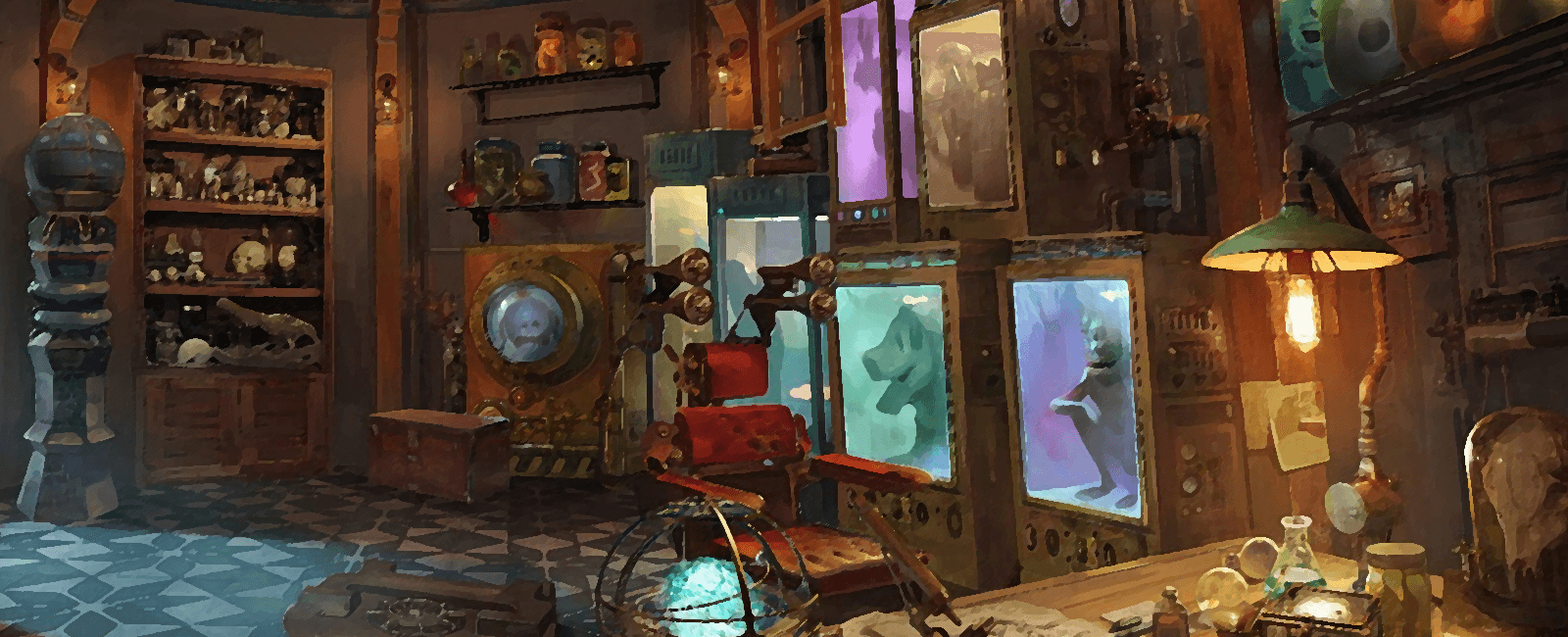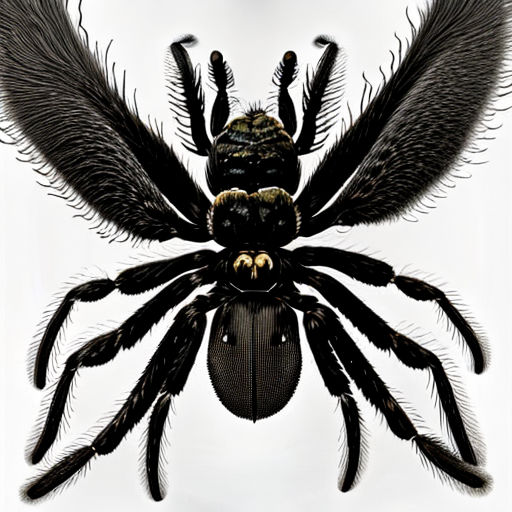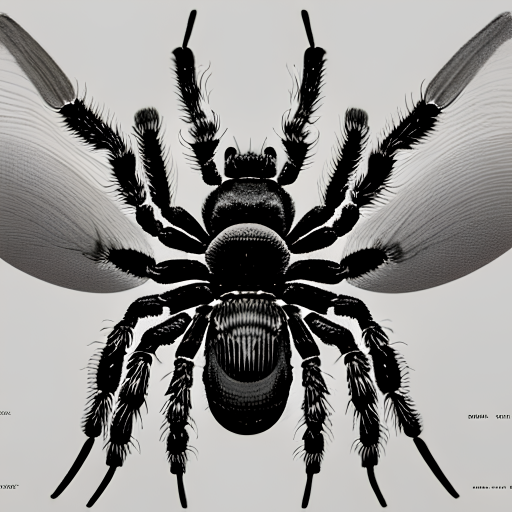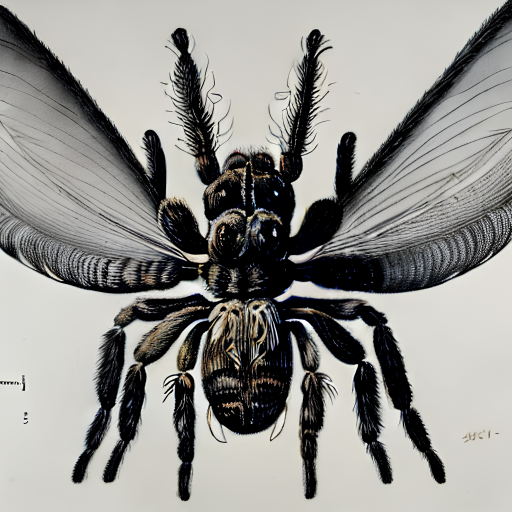Winged Spider
Winged Spiders are a genus of parasocial theraphosidae endemic to The Shifting Desert. Also known as , meaning Winglike, members of the genus can be found throughout the desert and exhibit unique adaptive traits. As of 1572, seven distinct species have been identified:
- Pterygoeidis Alalanata
- Pterygoeidis Crusmendacem
- Pterygoeidis Duabusalis
- Pterygoeidis Retesimilis
- Pterygoeidis Scutumallis
- Pterygoeidis Stillisala
- Pterygoeidis Verumalas
Basic Information
Anatomy
Similarly to other arachnids, winged spiders have eight limbs, chelicerae, and their body is covered in irritating hair-like structures like other tarantulas.
P. Stillisala have a total of twelve limbs; the anterior four of limbs have limited mobility, and have been observed to fulfill two distinct functions: sudden forward leaps, and applying quick and sudden force in order to crack exoskeletons.
The most striking feature of winged spiders is wing-like appendages emerging from their abdomen. Despite their name, these "wings" are in fact not used for flying, but for trapping moisture from the air and aid in dispersing heat (similarly to elephants). The notable exception is P. Verumalas, which uses those appendages to glide over small crevices or unto its prey.
The aforementiond specialised limbs of P. Duabusalis and P. Retesimilis can exhude an adhesive substance of similar composition to spider silk, and are the only species in the genus that retain spinneret-like organs.
Unlike other spiders however, all members of the genus Pterygoeidis lack spinnerets, and possess unusual traits: P. Verumalas and P. Duabusalis possess an extra pair of legs for stabilization; P. Duabusalis and P. Retesimilis have one pair of specialised limbs for immobilizing prey and bringing it closer to their chelicerae; P. Scutumallis and P. Alalanta possess elongated fangs complemented by a pair of vestigial limbs that can contract quickly, mostly used for grabbing prey.
Dietary Needs and Habits
All species of T. Pterygoeidis are predatory carnivores, though hunting methods vary between species.
and consume it over a period of several days.
P. Crusmendacem mostly inhabit Emek Aforim, where they utilize green tinged pseudolimbs to lure small vertebrae or other invertebrae; once in range, they quickly grab their prey with their forelimbs, injuring it, and deliver fast-acting venom using powerful fangs, which kills their prey in mere seconds. They then dig a small "grave" where they store it for future consumption, having as many as ten such graves as a food source and for marking their territory.
P. Duabusalis and P. Retesimilis inhabit relatively humid areas of the shifting desert, being E'in Midbar and the Flowing Belt respectively, which supposedly allowed them to retain spinneret like organs in their forelimbs; laying in ambush either outside their burrow or a relatively shadowed area nearby, once a potential prey is within their reach they grab it with their limbs, covered in adhesive silk-like substance and paralytic setae, and then drag it to their burrow, where they will paralyze it
Additional Information
Social Structure
Due to the scarcity of resources in the shifting desert and the varying conditions within it, species of T. Pterygoeidis follow four distinct social structures:
(such as jerboas, quails, or small skinks) may be ignored by the spider as long as they don't venture too close to its graves; invertebrates, especially other arachnids, are presumably always percieved as a threat and are attacked without warning regardless of the spider's need for food. During mating season (Earlfal to Latfal) members of opposite sex are never attacked, even if they attempt to uncover one of the graves.
Communal
Quasisocial
Semisocial
Solitary
A notable exception within the genus is P. Crusmendacem, which, with the exception of courtship and mating, live and hunt alone. They are highly aggressive and territorial, though what they consider their territory varies depending on the trespasser: they generally avoid large fauna (such as humanoids) and flora (such as sand camels), but will enter a threatening position if they get close to a grave they dug; depending on the status of its current graves, small vertebrates
Current Date: 2nd of Latsum, 1572
Scientific Name
Theraphosidae Pterygoeidis
Lifespan
7-11 years (male);
28-32 years (female)
28-32 years (female)
Average Weight
160-190 g
Average Length
11-17 cm
Geographic Distribution










Comments